Clotted Cream
As an Amazon Affilate, I earn commission on qualifying purchases.
If you’ve had afternoon tea in England, you’ve most likely had clotted cream with your warm scone. This rich and decadent cream is a must with some strawberry jam! I have made clotted cream several times in the past, as I always have an English Tea party for any big event involving the British royal family. I’ll definitely be making it for the King’s Coronation in May!
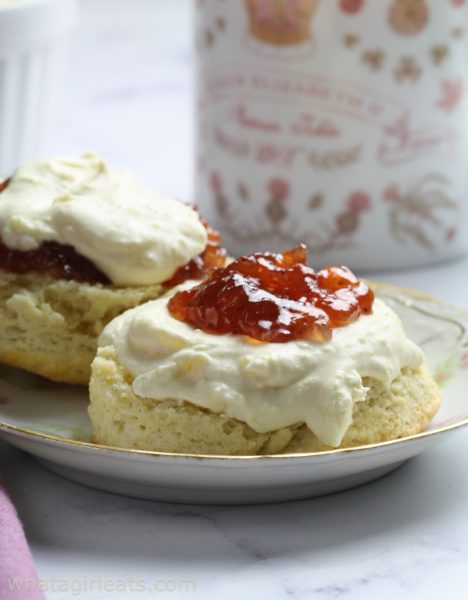
There is nothing more luxurious and decadent than clotted cream on a scone! The problem is that it’s very difficult, not to mention expensive, to find clotted cream in the United states. But, while it does take some planning and time, actually making clotted cream isn’t difficult at all. In fact it’s fairly hands off. (As an Amazon Affiliate, I earn commission on qualifying purchases.)
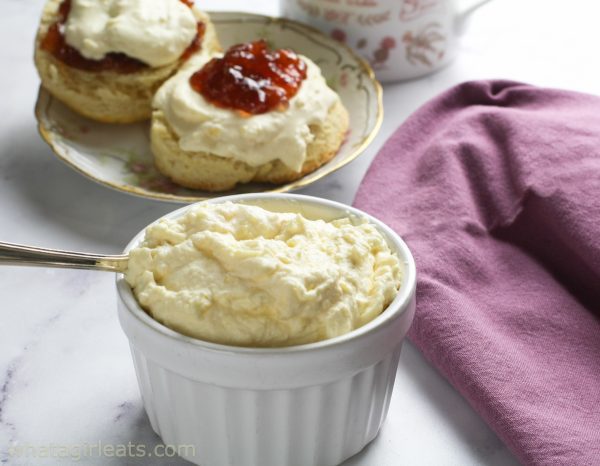
I got up at 4 am in 1981 to watch Lady Diana marry Prince Charles. When Prince William wed Kate in 2011, and then again when Prince Harry married Meghan, I made scones and clotted cream. In fact, I love England so much, that I packed up and moved there when I was 24. I remember the milk that was delivered to our flat came in pint glass bottles with a thick band of cream around the top. One had a couple of options; either skim off the heavy cream and save it, or shake it to incorporate the cream with the rest of the milk. Clotted cream was easily found at any local store.
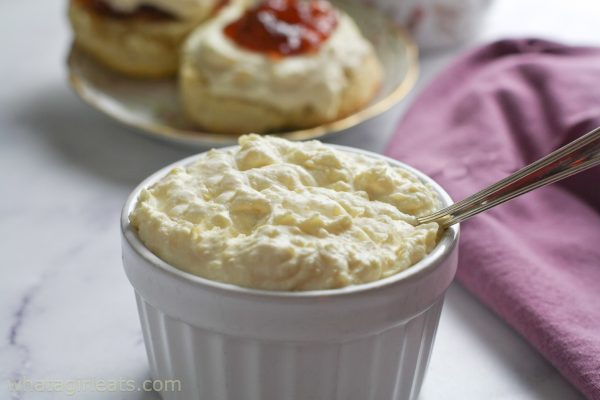
What is clotted cream?
Traditional clotted cream is made from rich, unpasteurized, full cream cow’s milk. It’s heated at a very low temperature until the cream rises to the top and then clots or “clouts”. The thick skin is scraped off the top and the liquid under is poured off. The resulting thick cream has a texture similar creme fraiche or mascarpone. It’s produced mainly in the Southwest of England in Devon or Cornwall. In the past a farmer would place a pan of cream in the Aga and let it sit overnight. We can make a reasonable facsimile using our modern ovens.
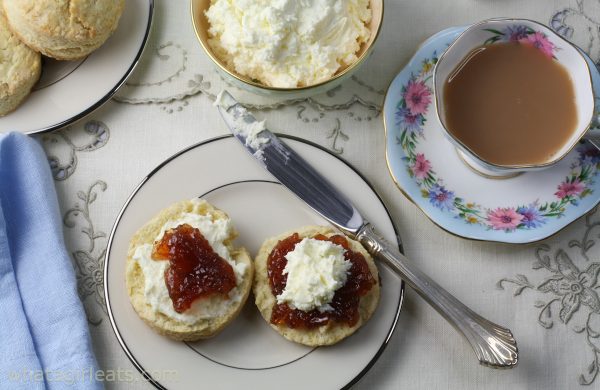
Cornish Clotted Cream is a protected product
It is registered as a Protected Designation of Origin, (PDO) under European Union. I’ve spoken about protected products before like San Marzano tomatoes and Prosciutto which are also protected. The European Union and the United Kingdom do a good job protecting regional products to ensure their high quality. To receive the designation, Cornish clotted cream must be made from milk produced in Cornwall, and must have a minimum butterfat content of 55%. If it’s produced outside of Cornwall, it can be called clotted cream, but cannot carry the PDO label. (Wikipedia)
What does clotted cream taste like?
This rich, buttery cream has a sweet, slightly nutty flavor, and a creamy texture that’s thicker than whipped cream, and thinner than cream cheese. Depending on the cream you use, the resulting clotted cream will be a lovely ivory color.
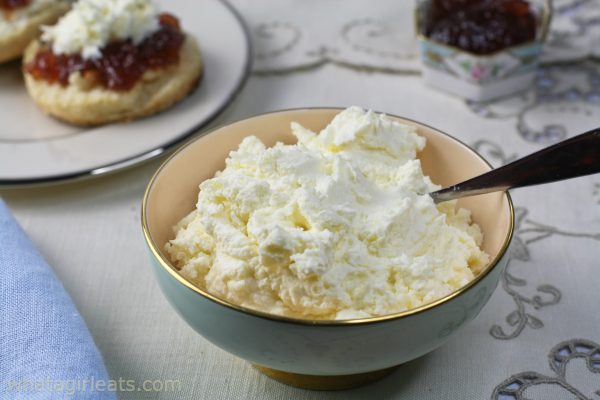
What kind of cream should be used to make clotted cream?
Because traditional clotted cream is made with unpasteurized milk, it’s difficult find in the US. Most milk or cream products produced in the United States are ultra pasteurized. Ultra-pasteurized cream won’t work for this recipe. But it’s not impossible to find minimally processed cream.
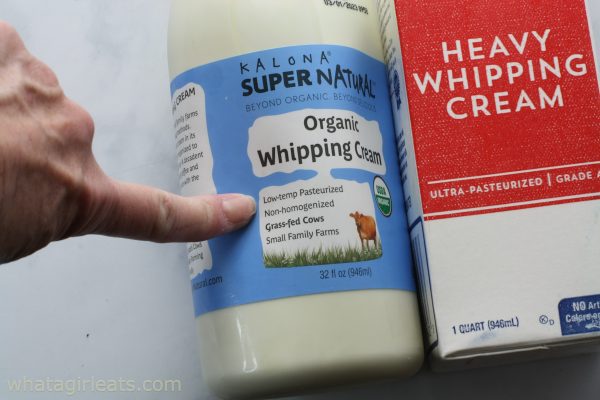
I found several varieties at Whole Foods and Sprouts. Your favorite large grocery store should have minimally processed heavy cream as well. I used Strauss heavy cream three separate times.
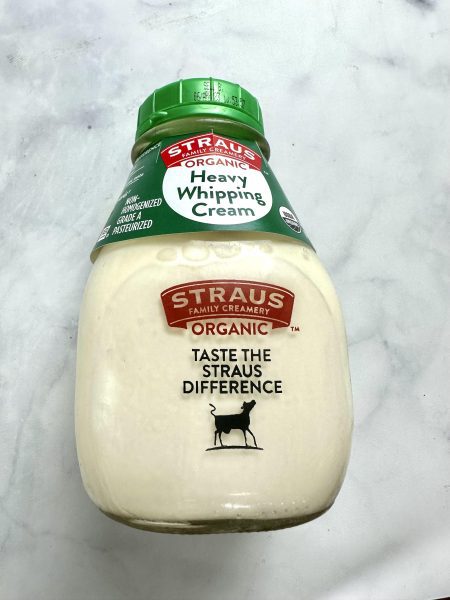
Differences in types of cream
What a wonderful product milk is! From milk we get so many delicious dairy products; cheeses, cream cheese, butter, yogurt, ice cream and of course cream. But let’s focus on cream and fat content.
- Half and half has between 10.5% and 18% milkfat
- light cream must have a minimum of 18% to 30%
- whipping cream has between 30% and 36% milkfat
- heavy whipping cream must have no less than 36% milkfat
- Double cream is 48% milkfat
- Cornish or Devon cream has a high fat content of 55%
For this recipe I used a few types of cream with varying milkfat.
Recipe source and testing
I tested four ways to make clotted cream. While researching, I found an old English cookbook I had bought in London in the early 1980s. Your Country Kitchen, by Jocasta Innes, is a great resource for those who like to do things from scratch, like making butter, cheese, bread and jam. There is an entire section on “Dairy”, which is where I found this recipe for clotted cream.
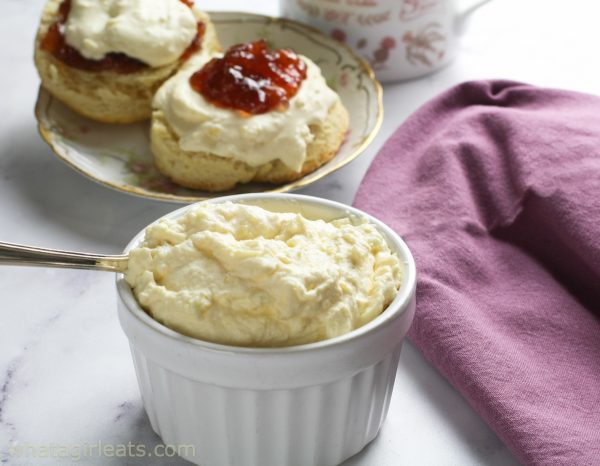
Your Country Kitchen had two separate methods for making clotted cream. I decided to try them both. The first method Innes offers is the “quick method”. This method also uses a water bath, in the form of a double boiler. Because I wanted to make sure that the temperature of the cream never boiled or rose above 195 degrees F., I used a candy thermometer and checked occasionally, adjusting the temperature if necessary.
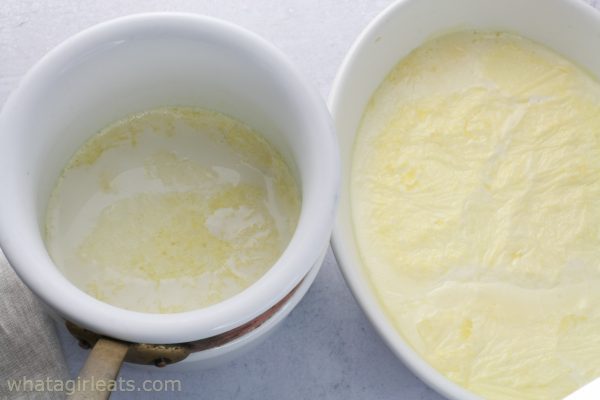
The second method I tried was on the stovetop. For this method, Innes instructs to pour the cream into an earthenware bowl or baking dish, in a bain-marie, until the cream looks wrinkly crusty.
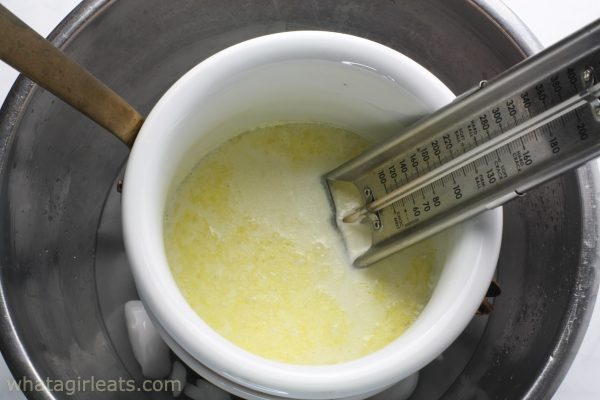
This stovetop method was quicker, but required more attention. The results were less than satisfactory as the final product resulted in too much leftover liquid.
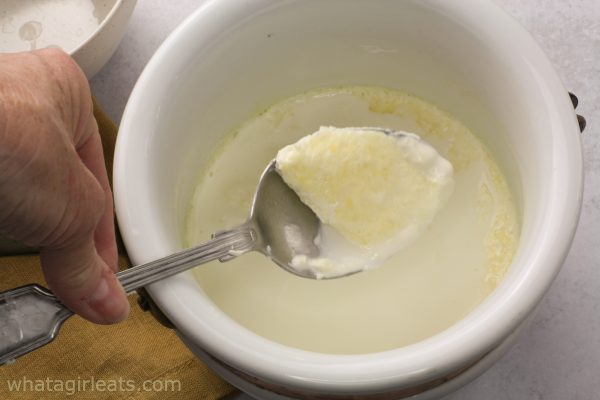
The next methods were in a very low oven with a bain-marie and without a bain-marie. I found that the oven method that worked best was the one using a water bath. The “clout” or “clot” with the water bath was more golden than the browner oven only method.
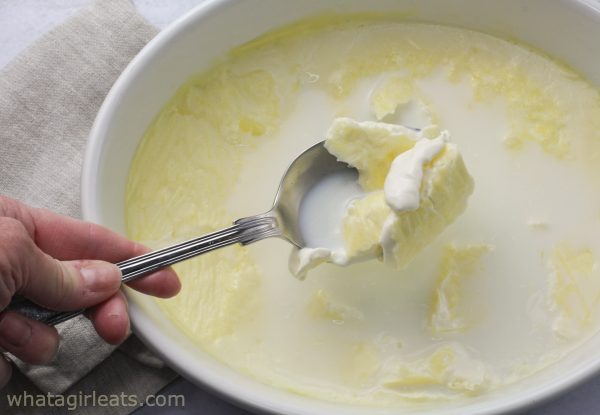
How to make homemade clotted cream
Not going to lie, there is no “quick” recipe for clotted cream. Allow yourself 24 hours for best results.
- Heat oven to 180-185 degrees F. If you aren’t sure if your oven’s temperature is accurate, buy an oven thermometer and place it in the middle of the oven.
- Pour cream into a shallow baking dish. The cream should be no higher than 1-1 1/2″.
- Place the baking dish inside of a larger dish and fill the outside dish with hot water about 1/2 way up the sides of the baking dish.
- Place the baking dishes in the oven and leave it undisturbed for 12 hours. I put it in the evening, so it will be done by the next morning.
- After 12 hours, the top of the cream will be crusty and golden looking.
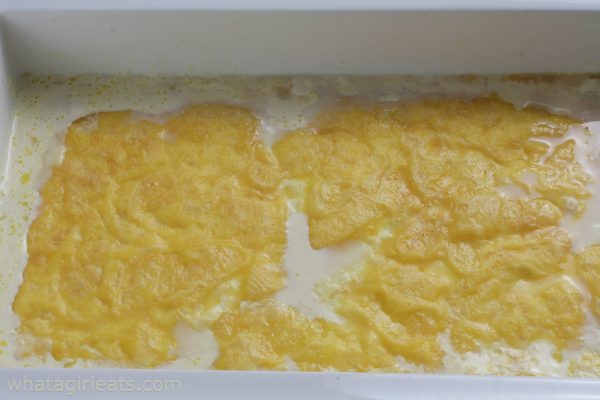
- Remove it from the oven and let it cool on the countertop for another hour, undisturbed.
- Remove the baking dish from the bain-marie and place the clotted cream in the refrigerator to continue curing.
- After 8-12 hours, carefully scrape off the thick crust. Place it in a dish, reserving the remaining liquid.
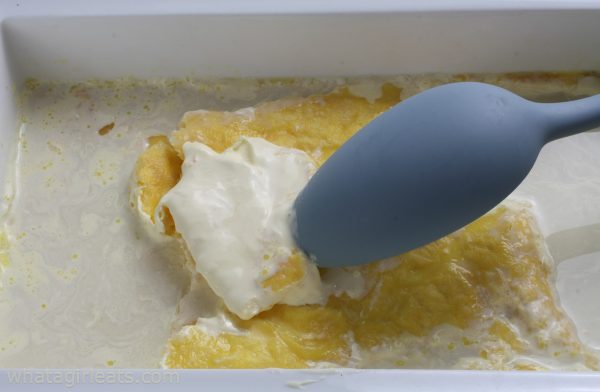
- Mix the “clout” well, so that the crusty parts are incorporated. If necessary, add any remaining liquid to the clotted cream until it’s spreadable.
- Pack the clotted cream into containers, and store in the refrigerator, for a week to 10 days.
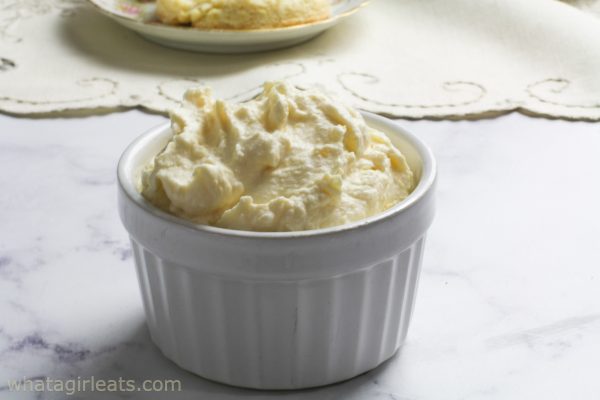
The great debate! Cream on top or bottom?
The clotted cream served with scones for afternoon tea in England can called Devonshire cream, Cornish cream, or just clotted cream. The difference, of course, depends on where it is produced. There is a fierce debate between the two counties as to what is the “right way” to spread clotted cream on a scone.
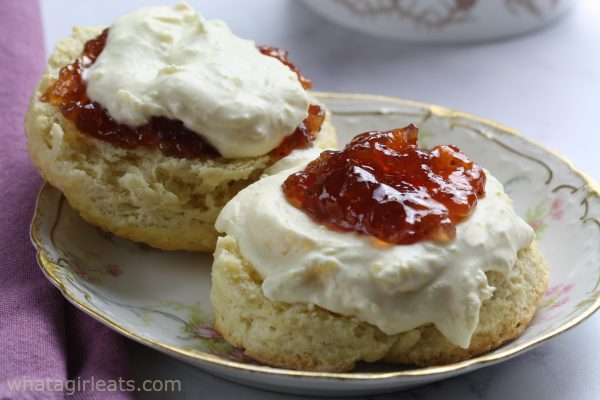
Team Devon spreads the cream on first, followed by the jam. Whereas Cornwall insists that the jam goes on first. In fact, there is no right or wrong way. The Queen always spreads jam on first, followed by cream. In any case, is there anything better than a pot of tea with fresh scones and clotted cream? This recipe for English Tea Scones is the only one I use! If you’re feeling ambitious, here’s recipe for homemade French Apricot Lavender Jam.
Tips for making clotted cream
- Plan on 24 hours from start to finish for this clotted cream recipe. This is closest to the traditional method.
- You’ll need 12 hours for the cream in the oven, and another 10 in the refrigerator, so plan accordingly if you don’t have a double oven.
- Starting the cream at 8 pm and letting it bake all night works well, as long as your oven doesn’t have a safety feature which turns it off after a certain point.
- Refrigerate the cream the next day, and it will be ready for afternoon tea!
- Do not use ultra-pasteurized heavy cream.
- The best option is organic heavy cream, or unpasteurized cream from a local dairy, if you can find it.
- If you’re unsure of your oven, use an oven thermometer. It should not rise about 190 F.
- Pour the heavy cream in a shallow baking dish. You want as much surface area as possible, so no more than a 1 1/2″ deep.
- Save the excess liquid to mix back into the “clout” if it’s too thick.
- Store clotted cream in small pots or mason jars for up to a week.
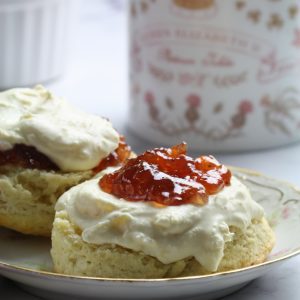
Clotted Cream
Ingredients
- 1 pint heavy whipping cream (NOT ultra-pasteurized)
Instructions
- Preheat oven to 180 degrees F.
- Pour heavy cream into an 8" by 8" baking dish or something similar.
- Place baking dish into a larger 13" by 9" inch dish and fill outer dish with hot water about 1/2 way up sides.
- Place baking dish in the center of the oven, uncovered and bake for 10-12 hours. Cream will have a dark golden skin and appear wrinkled.
- Remove baking dish from the oven and allow to cool about 1 hour. Place in the refrigerator for an additional 8 hours undisturbed.
- Remove baking dish from the refrigerator. Carefully scrape the top layer of the cream or "clout" off the top and place in a mixing bowl. There will be some liquid left. Reserve it to thin the cream if necessary.
- Mix the cream so that the yellow crusty parts mix in with the white cream and add any reserved liquid to the clotted cream to achieve a spreadable consistency.
- Pack clotted cream in small ramekins or a mason jar and refrigerate until ready to use.
Notes
- Plan on 24 hours from start to finish for this clotted cream recipe. This is closest to the traditional method.
- You’ll need 12 hours for the cream in the oven and another 10 in the refrigerator, so plan accordingly if you don’t have a double oven.
- Starting the cream at 8 pm and letting it bake all night works well as long as your oven doesn’t have a safety feature which turns it off after a certain point.
- Refrigerate the next day and it will be ready for afternoon tea!
- Do not use ultra-pasteurized heavy cream
- The best option is organic heavy cream or unpasteurized cream from a local dairy if you can find it.
- If you’re unsure of your oven, use an oven thermometer. It should not rise about 190 F.
- Pour the heavy cream in a shallow baking dish. You want as much surface area as possible, so no more than a 1 1/2″ deep.
- Save the excess liquid to mix back into the “clout” if it’s too thick.
- Store clotted cream in small pots or mason jars for up to a week.

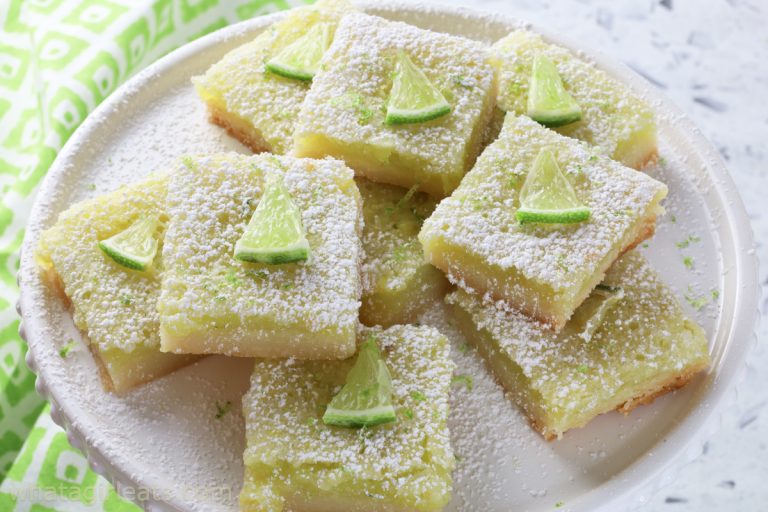

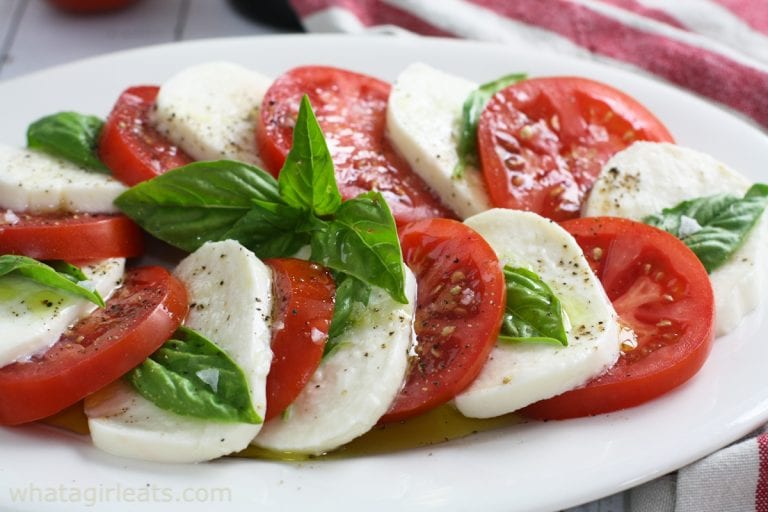
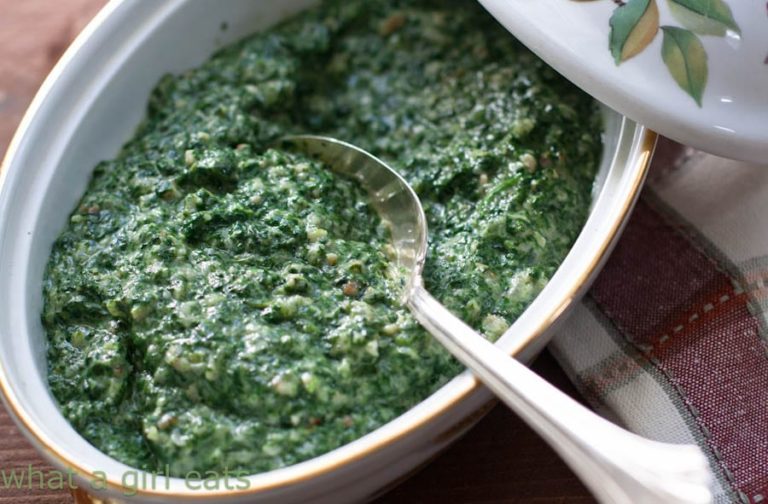
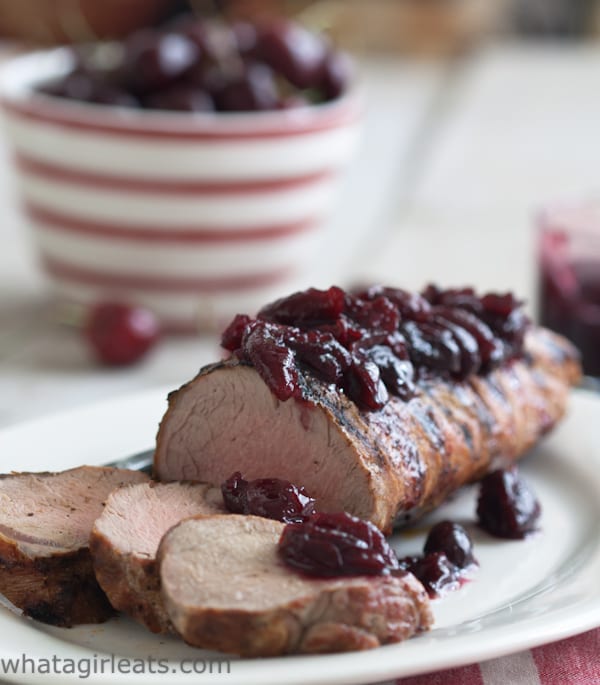

What a great post! So informative and with excellent instructions for making clotted cream. I’m looking forward to giving this a go.
thank you! there’s the big coronation coming up!
You can’t beat clotted cream on a scone. This homemade version was so easy to make.
I live in Cornwall where clotted cream originates! My granny used to make it every Sunday morning on the stove with gold top milk! So good on scones!
Definitely quite the rich and decadent cream! Fantastic for pairing with scones. I love the details you added and which type of heavy cream to use to help make it perfect.
Clotted cream is the ultimate indulgence for any true foodie. It’s the perfect complement to a steaming hot cup of tea, or a warm slice of homemade pie. So Yum!
Yes it is! Pie sounds like a great way to use it too!
Being from the UK, I miss it so much! Thanks for reminding me that I can make it! So good with scones and a cuppa!
Would you say the liquid byproduct of this process is similar to traditional buttermilk?